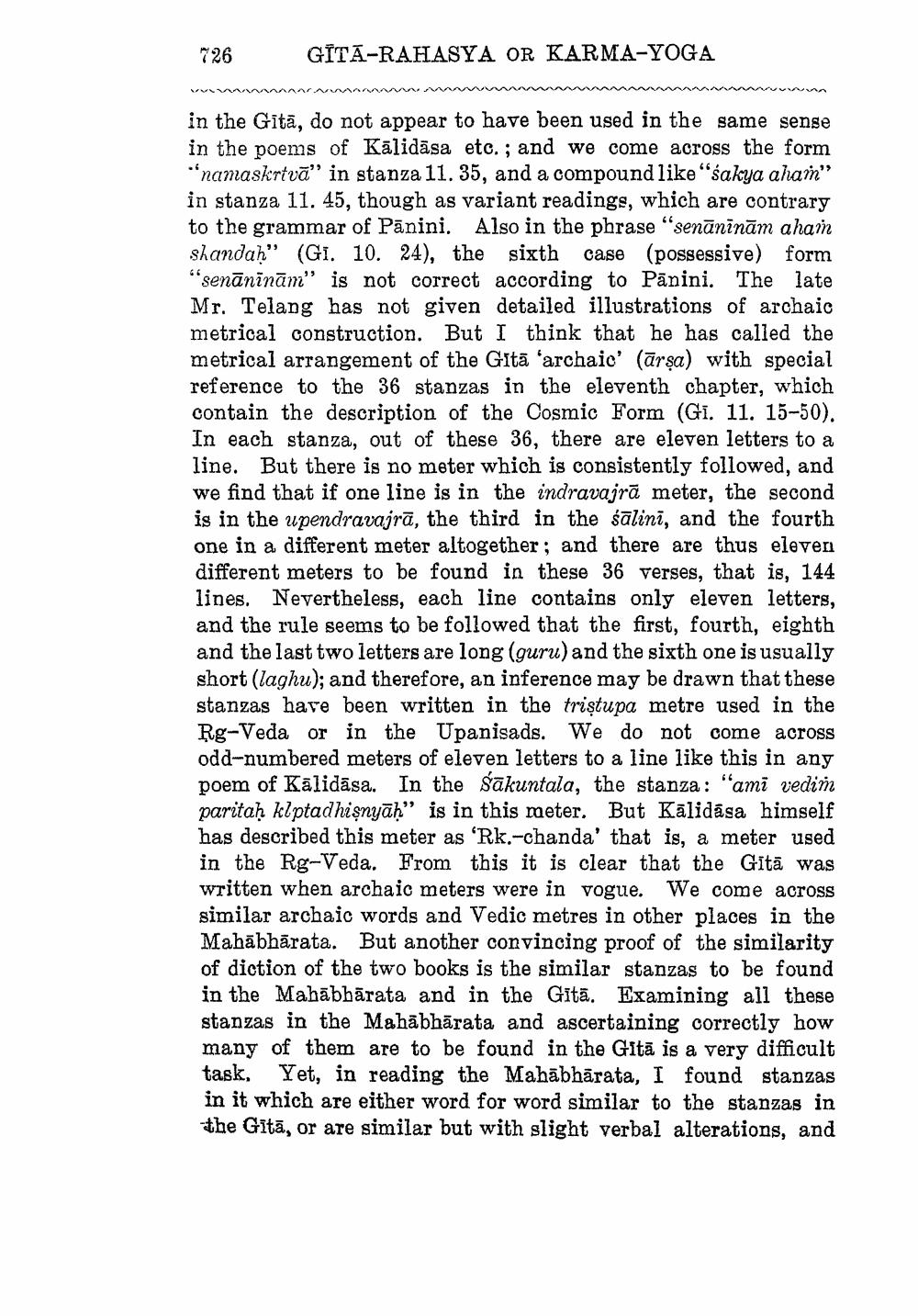________________
726
GITA-RAHASYA OR KARMA-YOGA
in the Gita, do not appear to have been used in the same sense in the poems of Kalidasa etc.; and we come across the form "namaskrtva" in stanza 11. 35, and a compound like "sakya aham" in stanza 11. 45, though as variant readings, which are contrary to the grammar of Panini. Also in the phrase "senānīnām aham shandaḥ" (GI. 10. 24), the sixth case (possessive) form "senānīnām" is not correct according to Panini. The late Mr. Telang has not given detailed illustrations of archaic metrical construction. But I think that he has called the metrical arrangement of the Gita 'archaic' (ārṣa) with special reference to the 36 stanzas in the eleventh chapter, which contain the description of the Cosmic Form (Gi. 11. 15-50). In each stanza, out of these 36, there are eleven letters to a line. But there is no meter which is consistently followed, and we find that if one line is in the indravajra meter, the second is in the upendravajra, the third in the salini, and the fourth one in a different meter altogether; and there are thus eleven different meters to be found in these 36 verses, that is, 144 lines. Nevertheless, each line contains only eleven letters, and the rule seems to be followed that the first, fourth, eighth and the last two letters are long (guru) and the sixth one is usually short (laghu); and therefore, an inference may be drawn that these stanzas have been written in the tristupa metre used in the Rg-Veda or in the Upanisads. We do not come across odd-numbered meters of eleven letters to a line like this in any poem of Kalidasa. In the Sakuntala, the stanza: "ami vedim paritaḥ klptadhiṣnyaḥ" is in this meter. But Kalidasa himself has described this meter as 'Rk.-chanda' that is, a meter used in the Rg-Veda. From this it is clear that the Gitā was written when archaic meters were in vogue. We come across similar archaic words and Vedic metres in other places in the Mahabharata. But another convincing proof of the similarity of diction of the two books is the similar stanzas to be found in the Mahabharata and in the Gita. Examining all these stanzas in the Mahabharata and ascertaining correctly how many of them are to be found in the Gita is a very difficult task. Yet, in reading the Mahabharata, I found stanzas in it which are either word for word similar to the stanzas in the Gita, or are similar but with slight verbal alterations, and




